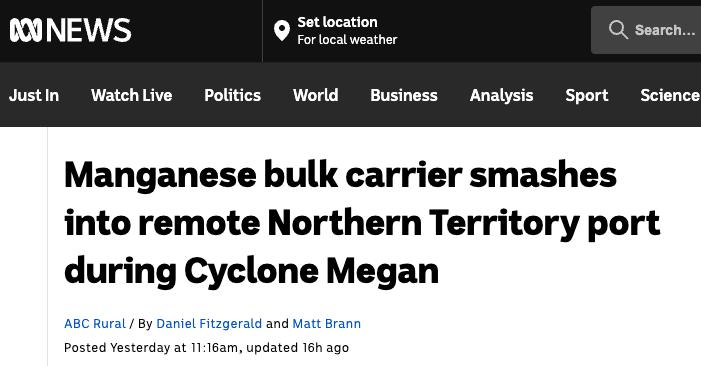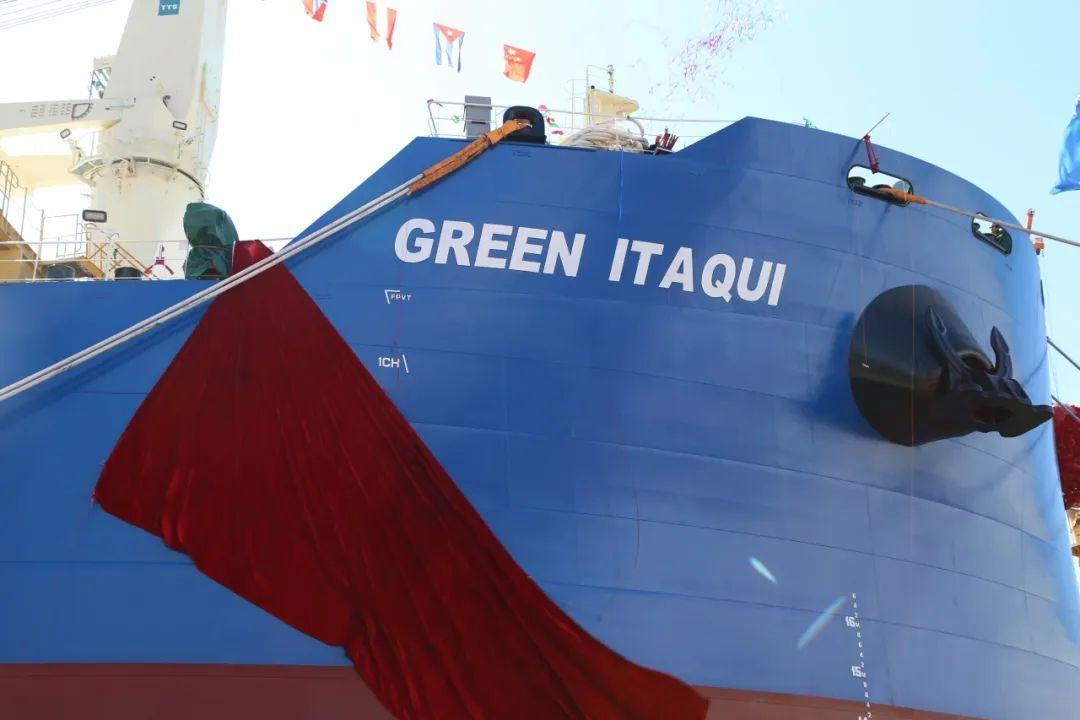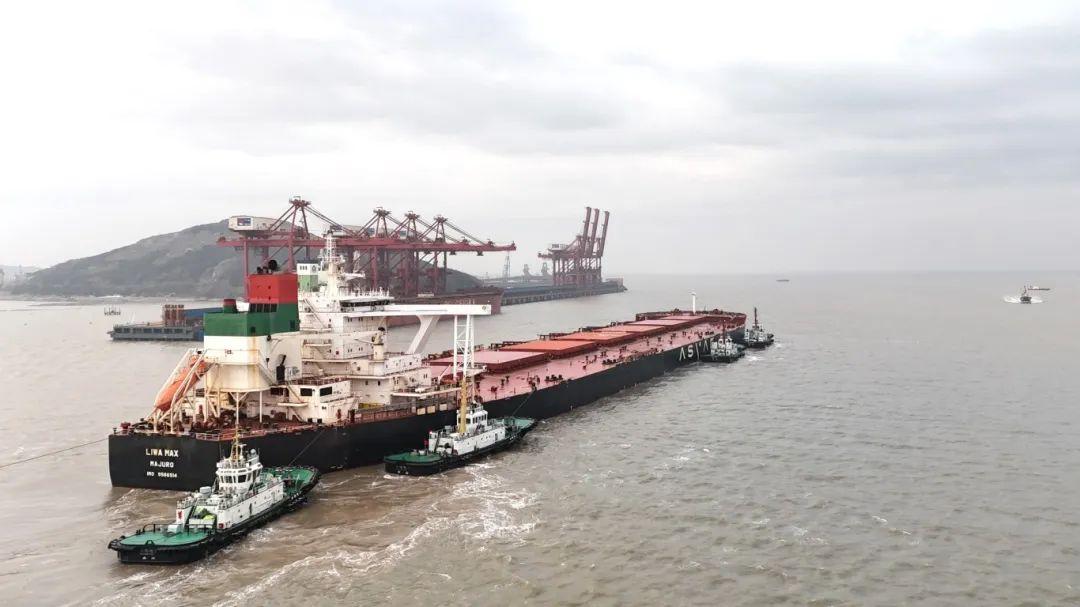CHAPTER 3 第3章
Commencement of laytime
装卸时间的起算
Port charters 港口租船合同
3.50 Under a port charter, a vessel reaches its specified destination when it arrives within the port and is in such a position as to be at the immediate and effective disposition of the charterer. The current state of the law is succinctly summarised in the following passage from Lord Reid’s speech in The Johanna Oldendorff :
Before a ship can be said to have arrived at a port she must, if she cannot proceed immediately to a berth, have reached a position within the port where she is at the immediate and effective disposition of the charterer. If she is at a place where waiting ships lie, she will be in such a position unless in some extraordinary circumstances proof of which would lie on the charterer . . .
If the ship is waiting at some other place in the port then it will be for the owner to prove that she is as fully at the disposition of the charterer as she would have been if in the vicinity of the berth for loading or discharge.
This criterion has become known as ‘‘the Reid test’’, replacing the earlier ‘‘Parker test’’, put forward by Parker LJ in The Aello.
3.50根据港口租船合同,船舶抵达港内承租人能够立即马上而有效地控制她的某一位置,即算已抵达了指定的目的地。目前法律上的地位是Reid勋爵在The Johanna Oldendorff 案报告中简要概括出来结论,下面是他的讲话片段:
在船舶能够被称为已经抵达港口之前,如果她不能立即马上驶抵泊位的话,她也必须是已经抵达了港内承租人能够立即马上并且有效地控制她的某一位置。如果她所处的位置正是船舶等泊的地方,那么,她就是抵达状态,除非在极特殊的情况下,承租人负责举证证明(何为特殊情况)……
如果该轮在该港的其他地方等候,那么船东就得证明,她完全处于承租人的控制之下,因为,如果她是在装货或卸货泊位的附近的话,她本应该是这样的。
这个准则就是众所周知的‘Reid准则’,它取代了早先由Parker大法官在The Aello案中提出的‘Parker准则’。
3.51 It will be noted that this test only applies where there is a delay between the vessel’s arrival in the port and its moving to a berth. Where the vessel can proceed direct to its berth then, as with a dock charter, it does not reach its specified destination until arrival in berth. Even if a berth is not available, she must have ‘‘reached a point as close to the loading berth as she might be permitted to approach’’. The owners cannot artificially bring forward the point of arrival by pausing without anchoring or by anchoring temporarily within port limits to pick up a pilot.
3.51需要注意的是,这种标准仅适用那种船舶抵达港内与靠泊之间有延迟的情况。如果船舶能够径直靠泊,同码头租船合同一样,只有当她到达泊位并靠妥后才算抵达了指定的目的地。即使泊位没有空闲,她也必须‘抵达她能够被允许前往的并且尽可能接近装货泊位的某一地点’。船东不能随意假想提出船舶没有抛锚或者临时抛锚接送领航员而短暂停止的地点就是抵达点。
3.52 These two requirements, that the vessel must have arrived within the port and be in such a position as to be at the immediate and effective disposition of the charterer, will now be considered in more detail.
3.52这两个必要条件,即船舶必须到达港内,并且处于承租人能够立即马上和有效支配的位置,现在,将更详细论述。
Arrival within the port 抵达港内
3.53 What constitutes a port is the first of the definitions given in the Charterparty Laytime Definitions 1980 and is in the following terms:
‘‘PORT’’ means an area within which ships are loaded with and/or discharged of cargo and includes the usual places where ships wait for their turn or are ordered or obliged to wait for their turn no matter the distance from that area. If the word ‘‘PORT’’ is not used, but the port is (or is to be) identified by its name, this definition shall still apply.
3.53港口是由什么组成的,这是第一次《1980年租船合同装卸时间用语定义》中给出的定义,它是这样阐述的:
‘港口 ’是指船舶在其范围内进行装和/或卸货的区域,它也包括通常船舶轮班等泊或受命等泊或被强制要求依次等泊的地点,而不管这些地点距该区域有多远。如果未使用‘港口’一词,但该港口仍可由其名称加以识别(或应该加以识别),则本定义仍应适用。
3.54 The Voylayrules 1993 give a similar definition in the following terms:
‘‘PORT’’ shall mean an area, within which vessels load or discharge cargo whether at berths, anchorages, buoys or the like, and shall also include the usual places where vessels wait for their turn or are ordered or obliged to wait for their turn no matter the distance from that area. If the word ‘‘PORT’’ is not used, but the port is (or is to be) identified by its name, this definition shall still apply.
3.54 《1993年航次租船合同装卸时间解释规则》中也给出了类似的定义,即:
‘港口’是指船舶装货或卸货的区域,而不论是在泊位、锚地、浮筒或类似地点,也应包括船舶轮班等泊,或受命等泊或被强制要求依次等泊时惯常使用的地点,而不管该地点与上述区域距离之远近。如果未使用‘港口’一词,但该港口仍可由其名称加以识别(或应该加以识别),则上述定义仍应适用。
3.55 Whilst the courts and arbitrators have tended of late to accept that some anchorages a considerable distance from the areas where cargo operations are carried out are within port limits, as will be seen, there are, at common law, rules which provide for a more restrictive definition of port limits. It by no means follows, in the absence of these definitions being specifically incorporated into the relevant charter, that all anchorages where vessels may have to wait will be deemed to be within port limits.
3.55尽管法院和仲裁员们近来已经倾向于接受‘距离进行货物作业的地点相当远的一些锚地仍在港界范围之内,但是,正如后文将会提到的,根据普通法,对港口范围还规定有较为严格的定义。这决不是说,在没有专门将这些定义并入到有关的租船合同的情况下,所有可供船舶等泊的锚地都可被看成是在港口范围之内。

《装卸时间与滞期费》购买链接(点击可购买)
海运圈聚焦专栏作者 魏长庚船长(微信号CaptWei)

 2018-12-18
2018-12-18 536
536 













